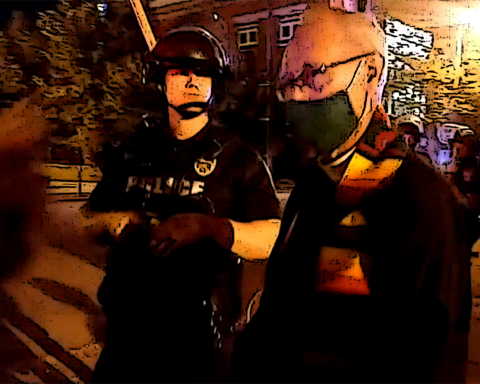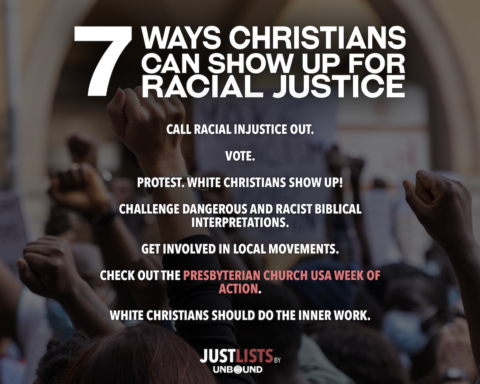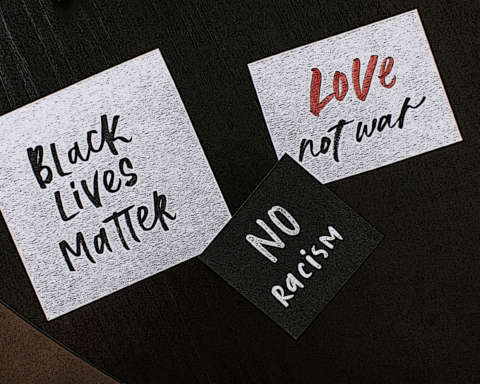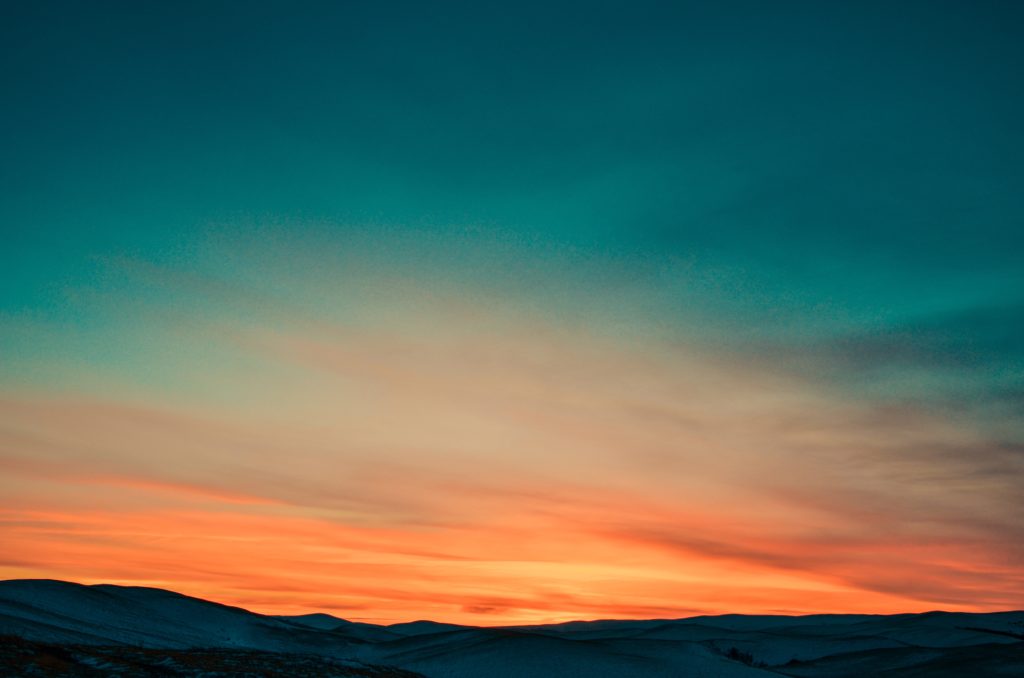The first time that I crossed the US/Mexico border from Douglas, Arizona, into Agua Prieta, Sonora, I remember a welcome sign on the side of the highway: Bienvenidos a Mexico. The border wall, a slotted metal cage that stretches miles across the desert, was painted on the Mexico side with migrating Monarch butterflies, corn seeds planted in the fields, and hands reaching for each other. On the US side, the Border Patrol agents raked the desert to track migrant footprints and hunted for people in groups running between cacti-ridden valleys. The port of entry on the American side resembled a corral for herding cattle with ordered lines, turnstiles and migration officers behind plexiglass walls. There were no armed guards.
I first visited Agua Prieta, a quiet, walkable, and connected city, in 2015. The civic and religious network of Agua Prieta was organized to respond to the unaccompanied youth crisis and provided hospitality to families, children, and single people on their journeys northward. The migrant shelter, Attention Center for the Migrant Exodus (CAME), fluctuated in occupancy between migrational seasons. The community faithfully hosted nightly dinners where volunteers filled guests’ plates with pulled chicken and rice and beans and soup. Across the cafe tables in CAME’s dining hall, I met Alvaro, a father who had been deported to a foreign town in Mexico after living in Colorado for twenty years. I met Lisette, a mother who was traveling with her infant child from central Mexico to Tijuana in search of safety and economic viability. I met the leaders and volunteers of CAME, our neighbors who have dedicated their life to the gospel by providing radical hospitality to migrants and treating them as fellow human beings.
Today, the borderlands between Douglas and Agua Prieta have been transformed. Where community gardens and memorials for deceased migrants once marked the otherwise unoccupied space on the Mexican side of the wall, the wall is now the marker of la linea, the line of people in a tarp-covered tunnel who stand and wait for their name to be called to cross the border. The line demarcates the space of uncertainty where people from many countries must stand, sleep, and wait to be questioned by immigration officials to determine the legitimacy of their fear. The line, and all of the waiting places that precede it, presents the danger for migrants to be extorted.
While the borderlands have been militarized since the enactment of NAFTA in 1994, the border is now a battleground for control of migrants’ bodies. The United States has deployed National Guard troops to the Southern border and has simultaneously pressured for the creation and deployment of the National Guard of Mexico. The refuge of CAME now stands under threat of violence, not only by organized crime, but also by the Mexican National Guard. Soldiers surrounded the walls of CAME in late August, creating terror for people who are fleeing violence. Where the statue of the Virgin Mary stands outside of the dormitories and the mural painted of Jesus riding atop La Bestia with his migrant disciples hangs in the dining room, the threat of invasion lives in the air.
Last April, CAME issued a call for accompaniment to deter and de-escalate situations of violence. The Presbyterian Peace Fellowship (PPF), building on its legacy of accompaniment with the Iglesia Presbiteriana de Colombia, answered the call to provide accompaniment in Agua Prieta. As mostly white citizens of the United States, accompaniers use their racial and citizenship privileges to de-escalate threat through a ministry of nonviolent presence and context-sensitive actions. In Agua Prieta, accompaniers spend their time listening to the stories of our neighbors in la linea, driving between the makeshift tunnel of tents, the migrant resource shelter, and CAME which now has a waitlist of over 600 people. Accompaniers listen to the stories of youth who are fleeing multi-party violence in the state of Guerrero, mothers and fathers migrating to reunify with their families and provide economic viability for their survival, and individuals seeking freedom from persecution as women, queer folks, racial, religious, and political minorites in their home countries.
On the other side of the wall, the once open-space port of entry is marked by three armed guards. The land that was once open to the migration patterns of diverse peoples and species is now fortified by a razor-wire and barricaded by shipping containers. An instrument and symbol of global trade, shipping containers have facilitated the distribution of raw materials and goods between national ports across oceanic and land-based borders. The containerization of the wall presents a new barrier for migrants who could previously risk their lives to cross the border wall with ladders and rope. Now, the vessels of globalization are preventing them from entering the United States under the watch of armed militia. The symbol of the shipping container is a reminder of the history of exploitation of Chinese immigrants whose labor built the Western railroad system. Today, migrants continue to be exploited politically and economically while income inequality continues to soar under global capitalism.
The people who wait in line under life-threatening conditions, the people separated between life and death by the thin edge of razor wire that define their hope, the people who are our neighbors who have been told that the United States’ border is closed.
Who will be our neighbors?

Elizabeth Welliver is a writer, social activist and graduate student at Vanderbilt Divinity School. Elizabeth is an alumna of the Young Adult Volunteer program and a member of the Presbyterian Peace Fellowship Activist Council. She most enjoys going for walks on Nashville greenways and learning from our collective stories.






Unbound Social